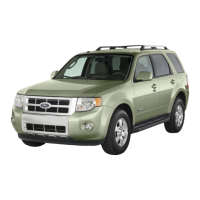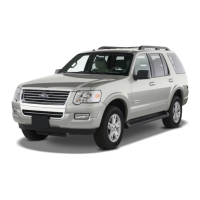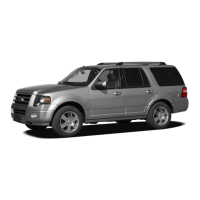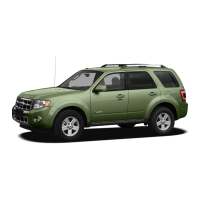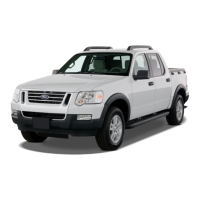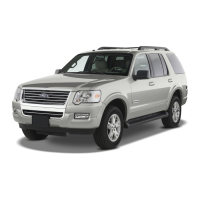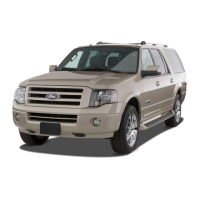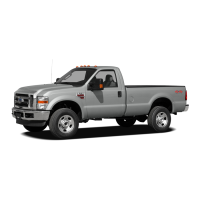
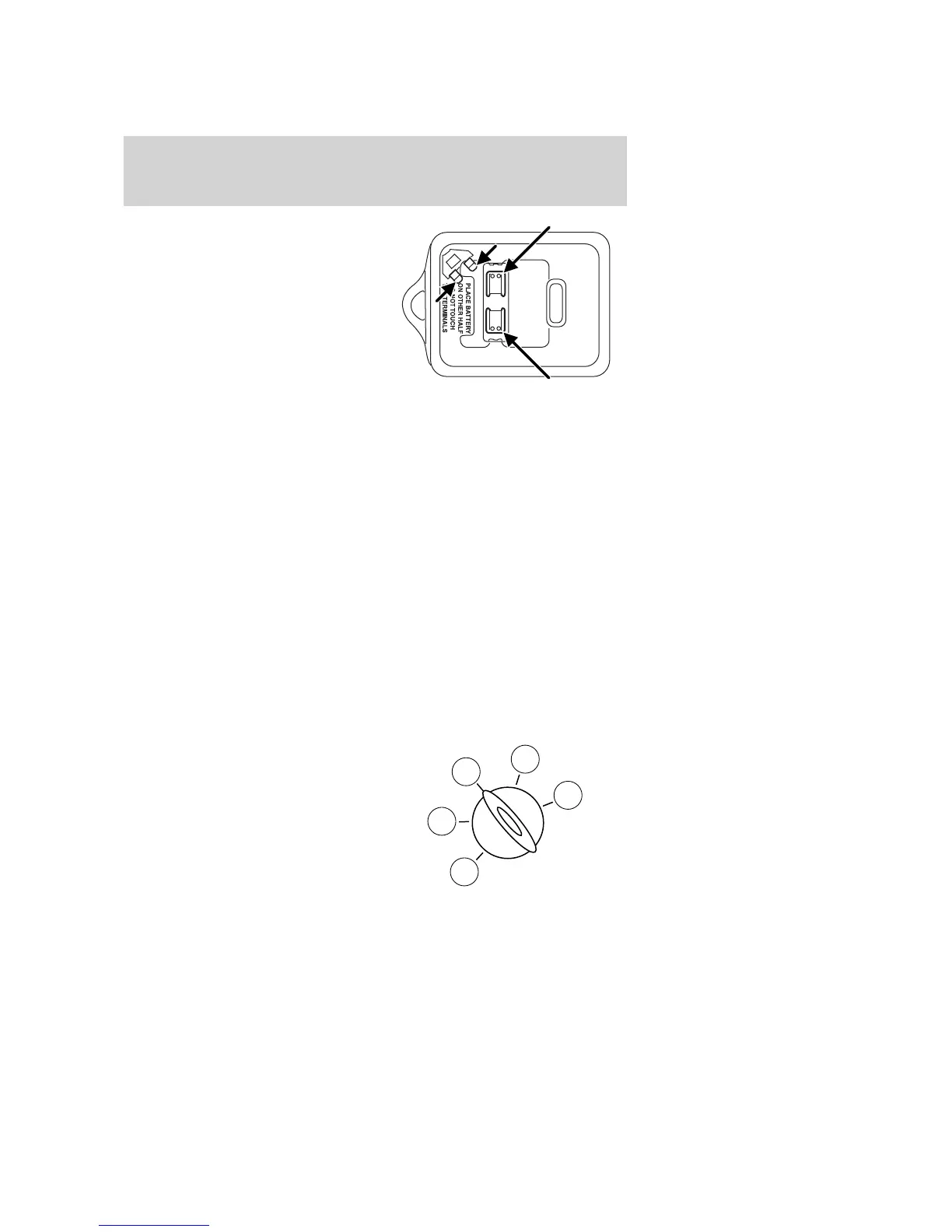 Loading...
Loading...
Do you have a question about the Ford 2009 E-150 and is the answer not in the manual?
| Brand | Ford |
|---|---|
| Model | 2009 E-150 |
| Category | Automobile |
| Language | English |
Discusses warning symbols and their importance for safety and environmental protection.
Explains warning lights and gauges that alert to vehicle conditions and potential repairs.
Covers the vehicle's audio system, including AM/FM stereo and related controls.
Details the operation and features of the AM/FM stereo system.
Explains the operation and features of the heater-only climate control system.
Describes the manual controls for heating and air conditioning.
Explains how to operate the headlamp control system for various lighting functions.
Details the activation and function of daytime running lamps.
Describes the multi-function lever for wipers, washers, and turn signals.
Explains how to use the windshield wiper control for different speeds.
Details the operation of the windshield washer function.
Provides instructions on how to adjust the tilt steering wheel for optimal driving position.
Explains the function and adjustment of the electronic compass and temperature display.
Describes how to read and manage the outside air temperature display.
Details the compass display and factors affecting its accuracy.
Explains how to set, increase, decrease, and resume speed control settings.
Describes the function and operation of upfitter switches for auxiliary power.
Covers the operation of vehicle keys and their importance, including SecuriLock system.
Explains how to use the power door lock controls for locking and unlocking.
Details the conditions under which the autolock feature activates.
Explains the SecuriLock anti-theft system and its operation as an engine immobilization system.
Provides warnings and instructions regarding seatback adjustment and cargo safety.
Describes the non-adjustable head restraints and proper seatback positioning.
Details how to adjust the front manual seat forward, backward, and the seatback.
Explains how to use the manual lumbar support control for firmness and softness.
Describes how to adjust the front portion of the power seat cushion.
Provides instructions for removing and installing the quick-release captains chair.
Covers safety restraint precautions, including driving posture and child seating.
Offers critical warnings about driving posture, child restraint, and seat belt usage.
Explains the function of the safety belt warning light and chime system.
Details the Belt-Minder feature as a supplemental warning for unbuckled safety belts.
Introduces the airbag system and its components.
Highlights crucial safety precautions related to the airbag system and occupant positioning.
Provides guidance on using safety restraints for children and important precautions.
Offers critical warnings about selecting and installing child restraints based on height, age, and weight.
Offers recommendations for child safety seat types based on size, height, weight, or age.
Details methods for attaching child safety restraints using LATCH and seat belts.
Addresses unique handling and safety considerations for utility vehicles and trucks.
Explains how SUVs and trucks differ from cars in vehicle characteristics and handling.
Details the uniform tire quality grading system for pneumatic passenger car tires.
Presents the tire quality grades as required by the U.S. Department of Transportation.
Provides instructions and recommendations for properly inflating tires for safe operation.
Explains the maximum tire pressure and where to find recommended inflation pressures.
Discusses the specific requirements for servicing tires with steel carcass plies and safety precautions.
Provides instructions on inspecting tires for wear, damage, and proper maintenance.
Details how to periodically inspect tire treads and sidewalls for wear and damage.
Explains how to identify worn tires using treadwear indicators and when replacement is necessary.
Advises on inspecting tires for damage like bulges, cracks, or separation.
Explains the information contained in the U.S. DOT tire identification number on tire sidewalls.
Outlines requirements for replacing tires and wheels, emphasizing using recommended specifications.
Lists driving habits that contribute to tire mileage and safety.
Explains the TPMS, its function, and the low tire pressure telltale.
Discusses how to change tires while considering the Tire Pressure Monitoring System sensors.
Explains how the TPMS measures tire pressure and warns of low pressure.
Details the TPMS reset procedure required after tire rotation for vehicles with different front/rear pressures.
Provides step-by-step instructions for performing the TPMS reset procedure.
Offers warnings and guidelines for using snow tires and chains on the vehicle.
Guides proper vehicle and trailer loading to stay within design weight capabilities.
Defines base curb weight as the vehicle's weight with fuel and standard equipment.
Defines vehicle curb weight as the new vehicle's weight plus aftermarket equipment.
Explains payload as combined weight of cargo and passengers, and where to find limits.
Provides trailer towing weight ratings based on engine and axle ratio.
Guides on using proper equipment for towing a trailer and its attachment.
Discusses acceptable and unacceptable types of hitches for towing.
Explains the proper connection and use of trailer safety chains.
Details the electronic trailer brake controller for smooth trailer braking.
Explains the ignition positions and procedure for starting the vehicle.
Describes the functions of each ignition key position.
Discusses normal brake noise and when to have the brake system inspected by a dealer.
Explains the ABS system, its function during emergency stops, and normal operating characteristics.
Details the Traction Control system for maintaining stability on slippery surfaces.
Explains ESC for enhancing directional stability during adverse maneuvers.
Describes RSC for maintaining vehicle roll stability during adverse maneuvers.
Guides on preventing damage to the power steering system and checking fluid levels.
Offers a critical warning about the higher rollover rate of utility vehicles.
Advises on safe procedures for emergency maneuvers like sharp turns or stops.
Explains the operation of the automatic transmission and its shift positions.
Describes the normal driving position for optimal fuel economy and automatic upshifts.
Explains how to activate and use the drive without overdrive mode for engine braking.
Provides instructions on how to safely return a vehicle that has gone off the pavement.
Explains the Reverse Sensing System and its function to warn of rear obstacles.
Details the reverse camera system, its display, and usage for parking assistance.
Outlines the complimentary roadside assistance program and covered services.
Guides on how to use the roadside assistance program and contact information.
Explains the location and operation of the hazard flasher control.
Describes the fuel pump shut-off switch and its activation after a jolt.
Explains the purpose of fuses and relays and how to identify blown fuses.
Details the standard fuse amperage ratings and their corresponding colors.
Provides instructions for changing a flat tire, including TPMS considerations.
Discusses the use and limitations of a full-size matching spare tire.
Outlines steps for safely stopping and securing the vehicle when changing a tire.
Details the procedure for changing a tire, including safety warnings and blocking wheels.
Provides instructions for jump-starting a vehicle with a gasoline engine.
Explains how to obtain warranty repairs and service from authorized dealers.
Offers guidance for finding service when away from home, including contact information.
Provides instructions for washing the vehicle's exterior, including product recommendations and precautions.
Details how to clean and polish exterior chrome parts for maintenance.
Guides on routine service, parts, and where to find warranty information for vehicle maintenance.
Lists safety precautions to follow when performing maintenance on the vehicle.
Provides instructions on how to open the vehicle's hood.
Illustrates and identifies key components located in the engine compartment.
Describes the maintenance-free battery and precautions for handling and servicing it.
Explains how to check engine coolant concentration and level for optimal performance.
Details the procedure for checking engine coolant concentration and level.
States that the fuel filter is lifetime and requires no regular maintenance or replacement.
Provides important safety precautions for handling automotive fuels and filling the tank.
Guides on selecting the appropriate fuel type for the vehicle, including octane and ethanol recommendations.
Offers advice on measuring fuel economy and techniques for improving it.
Explains how drivers can accurately measure their vehicle's fuel economy.
Provides instructions on how to fill the fuel tank correctly for accurate readings and consistent results.
Explains the emission control system and how to maintain it for proper function and compliance.
Describes the OBD-II system for monitoring emission control and detecting malfunctions.
Explains I/M testing readiness and what to do if the vehicle is not ready.
Guides on checking and maintaining the power steering fluid level.
Details the types of brake fluid reservoirs and their fluid level indicators.
Lists Motorcraft part numbers for various vehicle components and engines.
Provides specifications and capacities for various maintenance products and fluids.
Introduces the availability and warranty of Genuine Ford Accessories for the vehicle.

